
Supertrend Block - This block is a "conditional block" that is triggered based on the behavior of the Supertrend indicator. This technical indicator aims to detect price trends while providing good support/resistance zones for setting stop-losses.
Reminder of the basics
The Supertrend consists of a line varying from green to red, representing respectively an uptrend or a downtrend that alternates according to the following rule: the trend goes up when the closing price exceeds the previous value of the downtrend. Conversely, when the closing price falls below the level of the uptrend, the trend turns bearish.
The Supertrend can be used in several ways:
- Set protective stops: you can use the indicator as a "trailing stop" that sticks to the trend. For example, once you are in a long position, you can set your safety stop at the lower limit of the Supertrend. If the latter is breached on the downside, this indicates a downward trend reversal. The indicator then reverses and it is better to sell your position.
- Identify supports and resistances: the indicator can be used to identify a short-term support level in an uptrend, or a short-term resistance level in a downtrend.
- Generate buy/sell signals: we can use the Supertrend to identify entry or exit signals when the indicator reverses or when the price rebounds on it
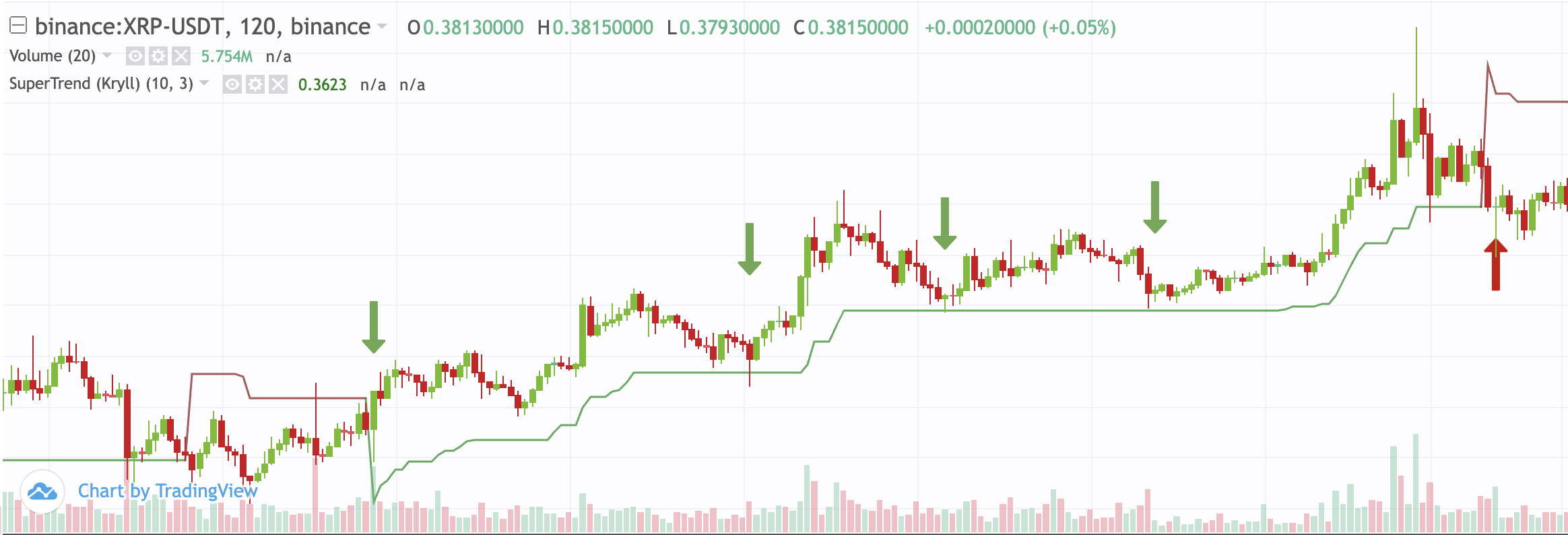
To learn more follow this link Tradingview wiki.
Block configuration
As presented above, the Supertrend indicator can be used for trend following (color of the curve), signal (change of state) or test (price comes to touch the curve). In the parameters of the block you can therefore select the time unit you want to study and the type of signal you want to validate the block with in order to move on.
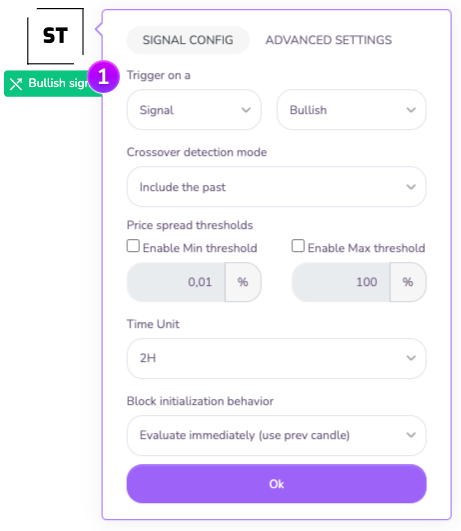

Trigger when allows you to select the triggering option for the block:
1 - Signal Mode
This mode allows you to validate the block when the Supertrend goes from one state to another. It is useful for triggering actions during bullish or bearish signals.
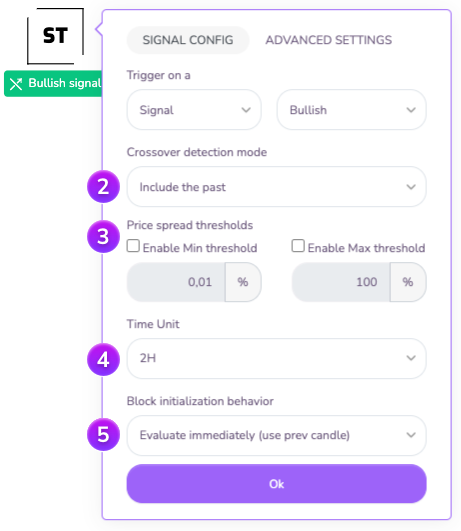

In the case of a Signal, an additional option is available: taking into account the past. This option allows you to take into account (or not) the previous candles for the validation of the block when it is initialized.
Example: Suppose you set up a block to detect an upward signal in 1 hour, and the strategy arrives on this block at 5:30. Let's further assume that the signal occurs at the close of the candle (at 6am)
- the block configured for 'Include the past' will be triggered because it detects a crossing between the 5 o'clock and the 6 o'clock candle.
- the block configured for 'Ignore past' will not be triggered because it will wait for a crossing only from the 6 o'clock candle and will ignore the past state of the indicator

In the case of the analysis between two curves (price evolution at the close and Supertrend in our case), Kryll provides by default a set of threshold tools to erase false signals.
Minimum threshold: This threshold allows you to define the minimum percentage above which the block will validate the crossing or the position. It is thus possible to erase the "false signals" which can appear in period of range, when the curves cross frequently on very small variations.
Maximum threshold: This threshold allows you to define the maximum percentage beyond which the block will no longer validate the crossing or the position. It is thus possible to avoid validating a condition on movements of extreme amplitude or too late.

Time Unit: You can specify the Time Unit on which you want the block to operate.

Behavior at initialization: Here you can define the behavior of the block at its initialization. You can either wait for the current candle to close (option "Wait for next close"), or instantly evaluate the block conditions on the last closed candle (option "Evaluate immediately"). This last option is particularly useful to perform analysis on several time units in parallel or to analyze an indicator on a macroscopic time unit (12H / Daily / Weekly...) without blocking the strategy by waiting for a candle to close.
2 - Trend Mode
This mode allows you to validate the block when the Supertrend is in a bullish (green) or bearish (red) mode from one state to another. This mode is particularly useful for validating a trend.
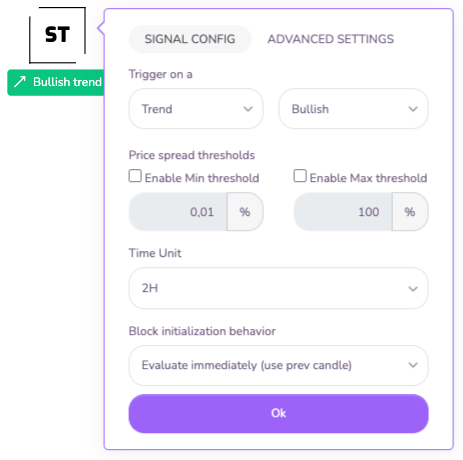
3 - Test Mode
This mode allows you to validate the block when the price tests the support or resistance zones of the Supertrend. This mode is particularly useful to monitor rebounds or breakouts in trend.
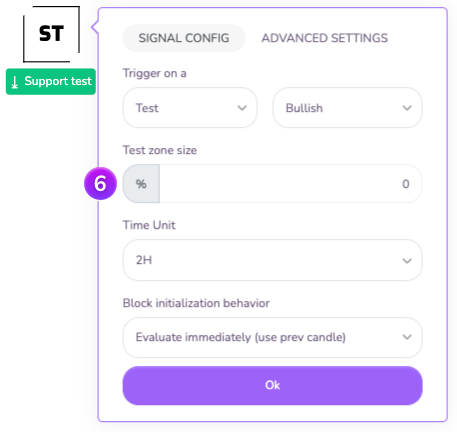

Test area size: Here you can define the size of the band around the Supertrend, which will serve as a test area. As soon as the price enters this area (comes to test the Supertrend), the block will be validated.
Configuration of the Supertrend indicator
If you want to change the default value of the indicator, you can do so here:

Do not hesitate to join us on our Telegram and Discord groups as well as our other social networks to share your opinion and your feedback on the Kryll.io platform.

Happy Trading,
Website : https://kryll.io
Twitter : @Kryll.io
Telegram EN : https://t.me/kryll_io
Telegram FR: https://t.me/kryll_fr
Telegram ES: https://t.me/kryll_es
Discord : https://discord.gg/PDcHd8K
Facebook : https://www.facebook.com/kryll.io
Support : support@kryll.io

